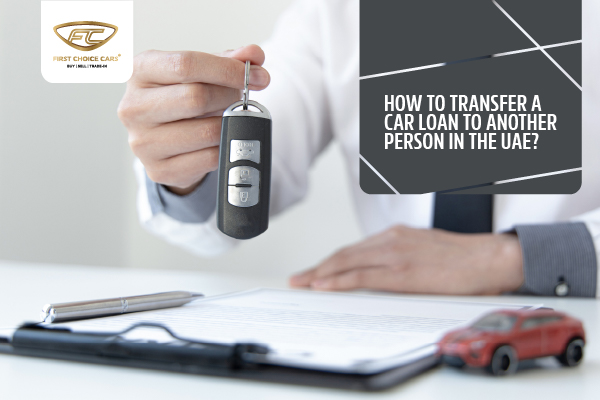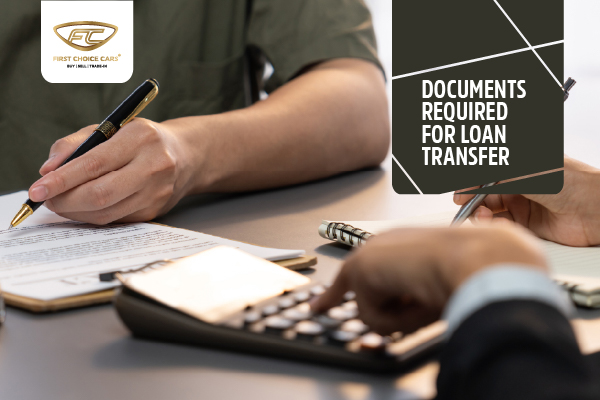If you are considering selling your car with an active loan in the UAE, you may be wondering if it is possible to transfer the loan to the buyer. Fortunately, transferring a car loan in the UAE is possible, though the process requires careful attention to financial and legal details to ensure a smooth transaction.
In this article, we will provide a comprehensive guide to help you understand the steps, required documentation, and some important considerations. We will also answer some frequently asked questions so you have a better idea of what to expect when transferring a car loan to a buyer.
How to transfer a car loan to another person in the UAE?

In the UAE, it is possible to transfer a car loan in the UAE to another person, but it requires approval from the bank or financing institution that holds the loan. The buyer will need to meet the lender's eligibility requirements to assume the existing loan, so it is crucial to assess both your and the buyer's qualifications at the outset.
Selling a car with a loan means that the outstanding balance must be either paid off or transferred before the sale can be completed. Additionally, the transfer process may involve fees and approval requirements, and certain banks may have their own specific policies, so it's wise to consult them directly for clear guidance.
What are the requirements for selling a leased car in the UAE?

In order for a lease car to be sold, the bank needs to receive the remaining loan balance. In other words, you can't sell or transfer ownership of a financed car unless the bank is paid off before completing the sale. So, once the selling price has been agreed upon, ask the bank for a letter that states the remaining loan amount and early settlement fees. The buyer will then have to pay off that amount with their loan before closing the sale.
Car Loan Transfer Process in the UAE

1. Obtain Outstanding Loan Balance Details
The first step is to contact your bank to get the exact outstanding balance of the loan. This will help the buyer understand the remaining amount they need to take on if the loan transfer is complete. Having a clear picture of the financial obligations involved is important for transparent negotiation.
2. Communicate with the Bank/Financing Institution
Reach out to your bank and notify them of your intention to transfer the car loan. The lender will then inform you of the requirements, procedures, and whether they allow a transfer to a third party. Banks will generally assess the buyer's financial situation as part of the approval process.
3. Assess the Eligibility of the Buyer for Loan Transfer
For a loan transfer to be approved, the buyer must meet the bank's eligibility criteria. This often includes providing a steady income and meeting minimum salary requirements. The buyer may also need to provide additional documentation to confirm they can manage the loan payments.
4. Finalize Loan Transfer and Sales Agreement
Once the buyer is approved, both parties will need to formalize the loan transfer and sign a new sales agreement. This document should outline the details of the transfer, including the agreed sale price, outstanding balance, and any additional terms. After the documents are signed and confirmed, the lender will proceed with the loan transfer and complete the transaction.
Documents Required for Loan Transfer

To proceed with a loan transfer, both the buyer and the seller will need to provide specific documents to the bank. Those documents include:
- Identification documents: Both parties will need to present valid identification documents, including Emirates ID and passport copies.
- Car registration and ownership documents: The vehicle registration card, or Mulkiya, is necessary to verify ownership and facilitate the transfer process. If the car is leased, additional documentation from the bank may be required.
- Loan-related paperwork: Obtain a copy of the loan statement, outstanding balance details, and any pre-existing loan agreements. These documents confirm the remaining balance and set the terms for the loan transfer.
Important Considerations When Transferring a Car Loan

When transferring a car loan, there are several important factors you should keep in mind to avoid any potential setbacks, such as bank requirements for car loan transfer in the UAE, and these include:
- Fees and Charges: Transferring a car loan typically involves fees, including processing charges and early settlement penalties, depending on the lender's terms. These fees vary by bank, so make sure to check in advance to avoid unexpected costs. Also, clarify who has to cover these costs–whether the buyer, seller, or both parties will share them.
- Legal Requirements and Approvals: In the UAE, car transfers must meet legal regulations. All relevant approvals from the bank, and in some cases, the RTA (Road and Transport Authority), are required to legally transfer ownership and complete the sale. Ensure that all the approvals are obtained to avoid complications with the car's registration and legal ownership status.
- Buyer's Creditworthiness Assessment: Since the buyer is assuming responsibility for the remaining loan, their creditworthiness plays a crucial role. The bank will need to verify the buyer's ability to manage payments, especially if the loan term is extensive. This may involve a credit check, income verification, and employment status confirmation.
Transferring a car loan in the UAE while selling a car is a structured process that requires close coordination between the seller, buyer, and bank. When you understand the steps required, gather all the necessary documents, and are prepared for fees and charges, you can ensure a smooth and legally compliant transfer.
Whether you are selling your financed car due to upgrading or relocating, following the guidelines in this blog will help facilitate a smooth and successful sale. Make sure to reach out to your bank and consult with a professional if needed, as the rules and requirements may vary slightly among banks and financial institutions.
Disclaimer: All information, including pricing, vehicle details, and legal requirements, is accurate at the time of publication but may be subject to change due to market conditions or policy updates. While First Choice Cars makes every effort to ensure the accuracy of the information provided, we hold no responsibility for any errors, omissions, or outdated content. We recommend contacting our team directly to confirm the latest details before making any decisions.
